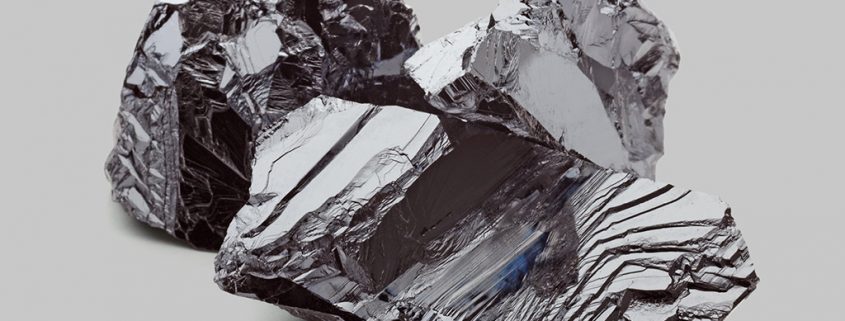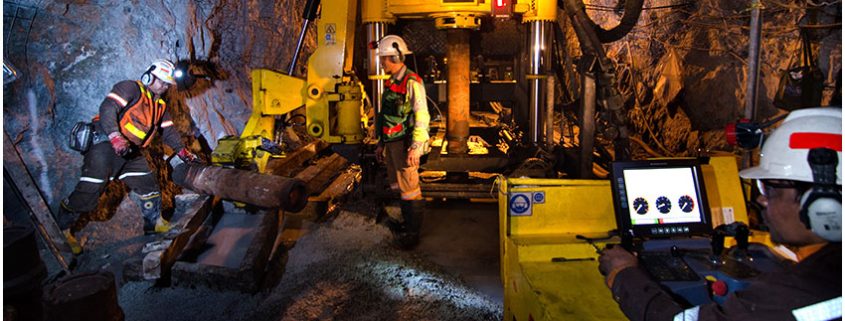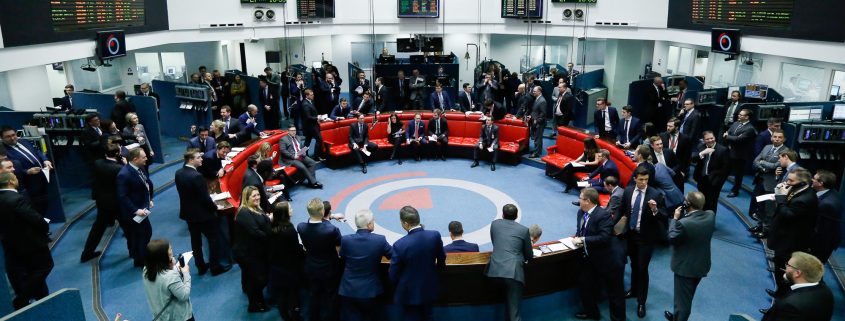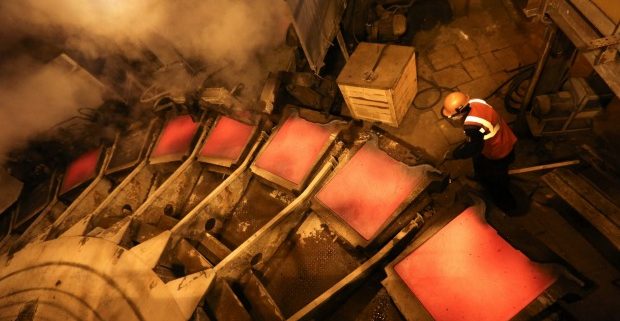Small price increases for LME base metals; only zinc declines (27.04.)
Another morning of wispy price increases today, on the London Metal Exchange. Following average gains of 0.8% on Wednesday.
Zinc was the only base metal to see a decline this morning, falling just $2 per ton. All other metals recorded small increases.
Copper prices were followed by the news that major copper producers BHP Billiton, Freeport-McMoRan and Antofagasta had lowered their production forecasts for 2017 due to operation disruptions. The three-month copper price continued to rise, currently trading at $5,719.50 per ton.
Nickel hit its lowest since June 2016 at the kerb of trading yesterday, but rose $40 per ton during premarket trading this morning.
“On balance, we remain mildly bullish for the base metals’ fundamentals but volume on the LME remains low, so it may take a pick-up in volume before prices become more directional again.” (Metal Bulletin senior analyst William Adams.)
Copper price rallies
- The three-month copper price rose by $4.50 to $5,719.50 per ton – this is the fourth day in a row the copper price has increased.
- Inventories fell 900 tons to 260,575 tons, a fifth consecutive day of decline.

- Sucden Financial noted in its Q2 metals forecast: “Supply disruptions [for copper] and labor disputes will have the potential to squeeze prices higher still and, with macro tailwinds suggesting robust demand growth, we expect prices to trade on the floor at around $5,550 per ton.”
- BHP Billiton has cut its copper production guidance for the 2017 financial year again due to the 44-day long strike at its Escondida mine during the quarter ending March 31, following a 2% reduction on its guidance in the fourth quarter last year.
- Rio Tinto has also revised its 2017 copper production guidance downward after reporting a 37% decline in first quarter copper output due to the significant impact of the strike at Escondida and the production curtailment at Freeport’s Grasberg.
All other base metals rise; Zinc decline
 The three-month aluminium price continued its premarket trend of the week with a small increase. It rose $5.50 to $1,969.50 per ton.
The three-month aluminium price continued its premarket trend of the week with a small increase. It rose $5.50 to $1,969.50 per ton.
Aluminium stocks fell again, but by the smaller margin that we have recently been seeing; they dropped just 3,925 tons to 1,652,200 tons.
Nickel rose $40 to $9,265 per tons, as it tries to recover from freefalling prices over the last few days. Nickel stocks were down 336 tons to 379,002 tons.
Zinc was the only metal to see a price decline. The three-month zinc price fell $2 per ton to start trading at $2,624 per ton.
The three-month lead price saw an increase of $6 to $2,191 per ton and Inventories fell 350 tons to 165,400 tons.
Tin rose $10 to $19,910 per ton, and it looks to bounce back above the $20,000 per ton mark. Stocks for tin fell 10 tons to 3,020 tons.
Currency moves and data releases
- The dollar index was up 0.01 to 98.96.
- In other commodities, the Brent crude oil spot price was down 0.62% to $51.13 per barrel.
- The UK FSTE 100 was down 38.22 (0.52%) to 7,250.50.
- In data, US crude oil inventories saw a decline of 3.6 million. The stronger-than-expected decline is crude oil inventories is boosting oil prices, which in turn exerts upward pressure across the metals complex.
- The Gfk German consumer climate for April was 10.2, up on the previous rating of 9.8. The Spanish unemployment rate for Q2 of 2016 was 18.8% – higher than the forecasted 18.6%.
- The economic agenda is busy today with a host of US data out, including on core durable goods orders, unemployment claims, goods trade balance and pending home sales.





 “Efforts by the company to cut costs and reduce numbers of workers, made a fiasco among them.” It led to agitated tensions and their determination to protest.
“Efforts by the company to cut costs and reduce numbers of workers, made a fiasco among them.” It led to agitated tensions and their determination to protest.


 The three-month copper price rose by $28.50 to $5,651.50 per ton. While copper stocks fell by 50 ton to 268,400ton, with 11,025 of freshly re-warranted copper. Global refined copper market posted a surplus of 51,000t in January, the International Copper Study Group (ICSG) said in a monthly report on April 20.
The three-month copper price rose by $28.50 to $5,651.50 per ton. While copper stocks fell by 50 ton to 268,400ton, with 11,025 of freshly re-warranted copper. Global refined copper market posted a surplus of 51,000t in January, the International Copper Study Group (ICSG) said in a monthly report on April 20.


 Base metals prices started a holiday-shortened week mostly on the defensive. With LME premarket trading on Tuesday April 18 seeing lower levels. – Potentially supportive macroeconomic developments were shrugged off.
Base metals prices started a holiday-shortened week mostly on the defensive. With LME premarket trading on Tuesday April 18 seeing lower levels. – Potentially supportive macroeconomic developments were shrugged off. e seasonally strong second quarter. The lack of upside momentum in most of the metals since mid-February has increased the chance of stale long liquidation,” William Adams of Metal Bulletin said.
e seasonally strong second quarter. The lack of upside momentum in most of the metals since mid-February has increased the chance of stale long liquidation,” William Adams of Metal Bulletin said. y trading at $1,928 per tonne, up $18 from the Thursday close. The local government in Xinjiang, western China, halted three new aluminium projects with combined capacity of 2 million tons per year for violating rules aimed at curbing output.
y trading at $1,928 per tonne, up $18 from the Thursday close. The local government in Xinjiang, western China, halted three new aluminium projects with combined capacity of 2 million tons per year for violating rules aimed at curbing output. a $29 decline, and looks vulnerable to a test of last week’s $5,615 low. While three-month zinc price was at $2,593 per tonne, a $31 loss, with a test of $2,558 – last week’s low-point – possible. Also, three-month lead price skidded as low as $2,200 per tonne, a $39 loss, while nickel fell to $9,560, down $190. Most noteworthy, three-month tin price stood at $19,795 per tonne, however, a $190 advance.
a $29 decline, and looks vulnerable to a test of last week’s $5,615 low. While three-month zinc price was at $2,593 per tonne, a $31 loss, with a test of $2,558 – last week’s low-point – possible. Also, three-month lead price skidded as low as $2,200 per tonne, a $39 loss, while nickel fell to $9,560, down $190. Most noteworthy, three-month tin price stood at $19,795 per tonne, however, a $190 advance.


 erde and the temporary export agreement for Freeport’s Indonesian subsidiary. The next World Copper Conference will be in Santiago, Chile. It will happen 9-11 April 2018.
erde and the temporary export agreement for Freeport’s Indonesian subsidiary. The next World Copper Conference will be in Santiago, Chile. It will happen 9-11 April 2018.